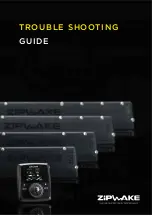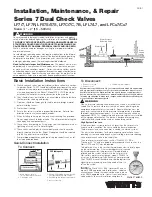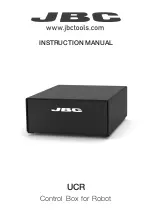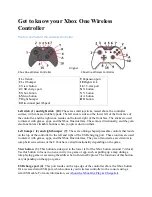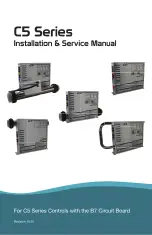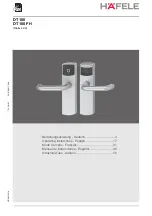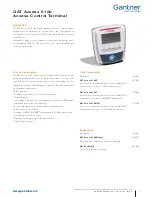
Effective: October 2018
2
F-35-60
SEQUENCE OF OPERATION / FLAME
RECOVERY / SAFETY LOCKOUT
Start Up - Heat Mode
When a call for heat is received from the thermostat supplying
24VAC to TH/W, the control will reset, perform a self-check
routine, flash the diagnostic LED and begin a pre-purge delay.
Following the pre-purge period, the gas valve is energized and
sparking commences for the Trial For Ignition (TFI) period.
When flame is detected during the TFI, the sparking process is
terminated and the gas valve remains energized. The
thermostat and burner flame are constantly monitored to assure
proper system operation. When the thermostat is satisfied and
the demand for heat ends, the gas valve is immediately de-
energized.
Failure to Light - Lockout
SINGLE TRIAL MODEL
Should the burner fail to light, or a flame is not detected during
the TFI period, the gas valve will de-energize and the control will
go into lockout. The LED will indicate the fault code for ignition
lockout.
MULTI TRIAL MODEL
Should the burner fail to light or the flame is not detected during
the TFI period, the gas valve will de-energize. The control will
then go through an inter-purge delay before an additional
ignition attempt. The control attempts two additional ignition
trials before de-energizing the gas valve and entering lockout.
The LED will indicate the fault code for ignition lockout.
FLAME FAILURE - RE-IGNITION MODE
If the established flame signal is lost while the burner is
operating, the control will respond within 0.8 seconds by
immediately energizing the H.V. spark for the TFI period in an
attempt to relight the flame. If the burner does not light within
the TFI, the gas valve will immediately de-energize and single
try models will enter lockout. On multi-try models, a new TFI
sequence will begin after an inter-purge delay. Multi-try models
perform two additional attempts to light the burner before de-
energizing the gas valve and entering lockout. If the burner
relights, normal operation resumes.
FLAME FAILURE-RECYCLE MODE
With the “Recycle After Loss of Flame" option, upon loss of
flame, the gas valve is de-energized and the control proceeds to
inter-purge before attempting to relight the flame. Multi-try
models permit three tries for ignition including inter-purges. If
the burner relights, normal operation resumes. If the burner
does not relight, the control will enter lockout.
Lockout Recovery
Recovery from lockout requires a manual reset by either
resetting the thermostat, or removing 24 VAC for a period of 5
seconds. On models with automatic reset, if the thermostat is
still calling for heat after one hour, then the control will
automatically reset and attempt to ignite the burner.








